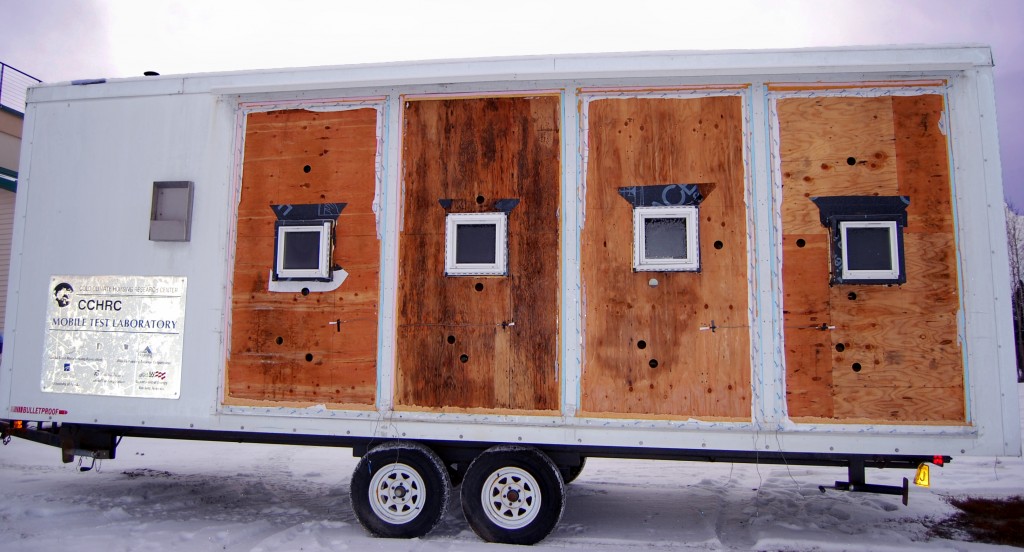Moisture control in cold climate housing is a critical concern, as moisture accumulation in the building envelope can lead to mold and rot. As homeowners in Interior Alaska add exterior foam insulation to their walls, they can lower their heating bills. However, if not done right, they can also create the potential for moisture damage.
To learn more about this risk, CCHRC conducted experiments over two years on wall retrofits in a mobile lab with nine test walls with different combinations of wood framing and interior and exterior insulation, some with a vapor barrier and some without. The research question: How much exterior insulation do you need to prevent moisture accumulation?
Throughout the experiment, we monitored the humidity and wood moisture content inside the walls. When we took the walls apart last summer, the wood sheathing ranged from clean to spotty to downright mold-covered. The walls with thick exterior insulation (65 percent or more of the total wall R-value) showed no signs of moisture damage. The walls with less exterior insulation showed a little or a lot of mold.
Insulation ratios
When you add exterior insulation, you change many things related to moisture control. The extra insulation will slow heat loss through the wall and keep the framing warmer in the winter, but it will also inhibit moisture from escaping in the summer. This balance of moisture buildup in the winter and release in the summer has allowed our homes to work in the Interior. So if you’re going to block a drying pathway by adding foam, the trick is to add sufficient insulation to keep your wall cavity warm enough so that water vapor does not condense on the sheathing. A wall system that achieves this should not have moisture problems, short of plumbing leaks or other major defects.
In our study, we found that retrofitting walls with foam is safest when 65 percent or more of the total wall R-value is outside the sheathing. Every other wall in the study (ranging from 59 percent to 30 percent exterior insulation) allowed moisture to accumulate during the winter and/or mold to grow. Because many residential retrofits have less than 30 percent of the wall R-value outside the sheathing, the durability of the wall becomes largely a function of indoor conditions. In these cases, the potential for moisture damage depends on the quality of a vapor barrier and interior humidity conditions.
Can adding less insulation than this 65 percent mark work in the Interior? Yes, but you’re taking more risk, and counting on humidity and pressure control measures to protect your house for you. This typically means having a mechanical ventilation system in your home, such as a heat recovery ventilator (HRV). Do you have an HRV? If so, do you maintain it? Your home will thank you if you do. If you don’t, today’s wall retrofit might be creating more work for you than you counted on.
To learn more about the Mobile Test Lab, read the four-page report here.

